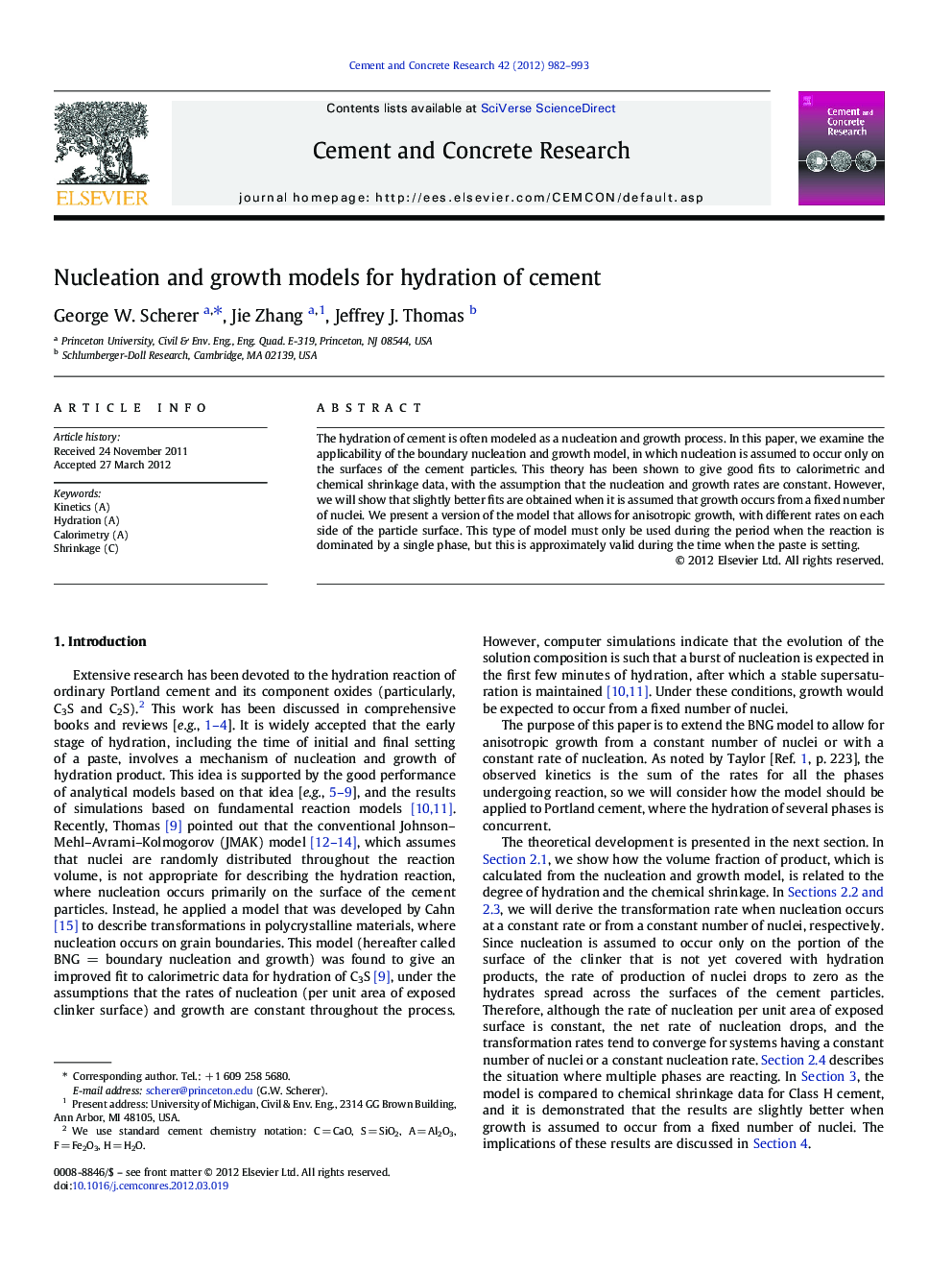| کد مقاله | کد نشریه | سال انتشار | مقاله انگلیسی | نسخه تمام متن |
|---|---|---|---|---|
| 1456682 | 989218 | 2012 | 12 صفحه PDF | دانلود رایگان |

The hydration of cement is often modeled as a nucleation and growth process. In this paper, we examine the applicability of the boundary nucleation and growth model, in which nucleation is assumed to occur only on the surfaces of the cement particles. This theory has been shown to give good fits to calorimetric and chemical shrinkage data, with the assumption that the nucleation and growth rates are constant. However, we will show that slightly better fits are obtained when it is assumed that growth occurs from a fixed number of nuclei. We present a version of the model that allows for anisotropic growth, with different rates on each side of the particle surface. This type of model must only be used during the period when the reaction is dominated by a single phase, but this is approximately valid during the time when the paste is setting.
Journal: Cement and Concrete Research - Volume 42, Issue 7, July 2012, Pages 982–993